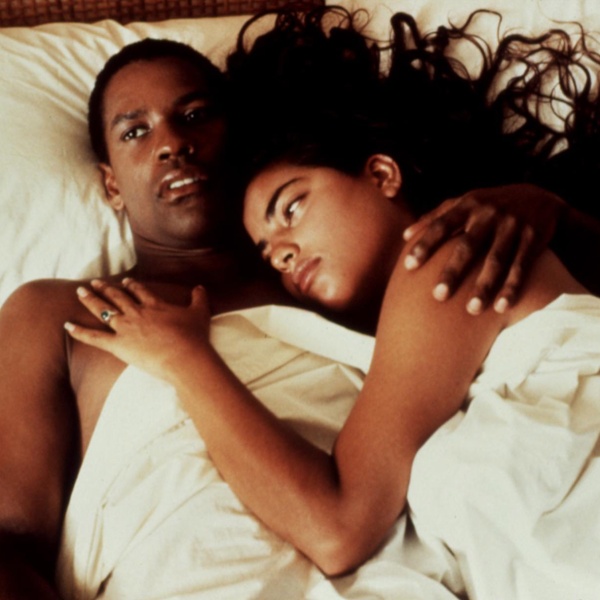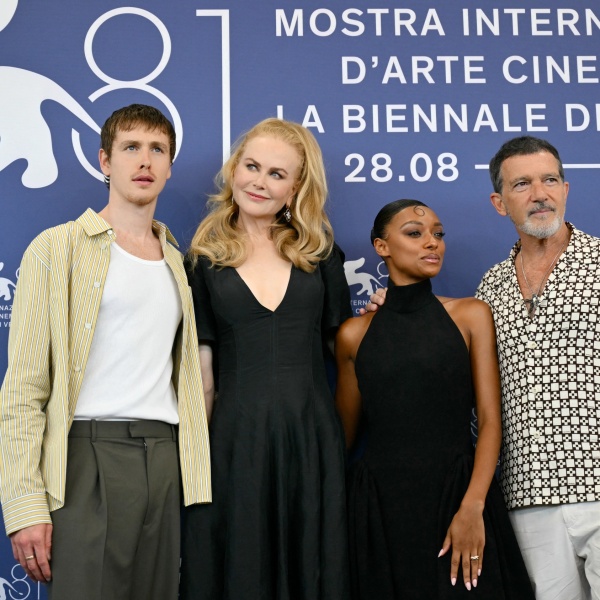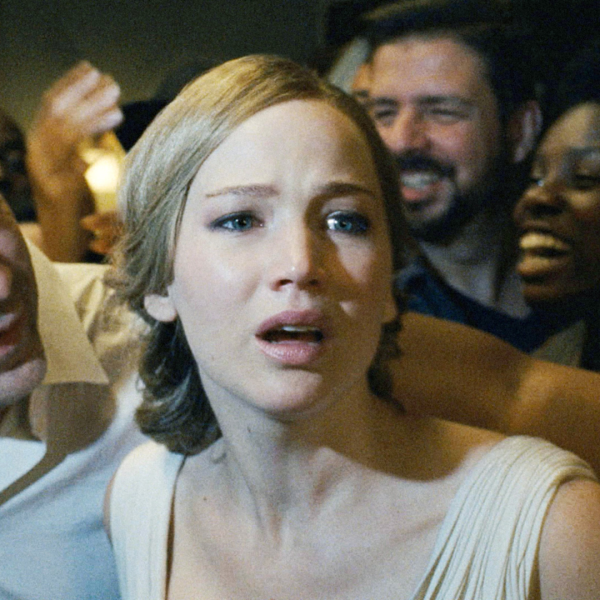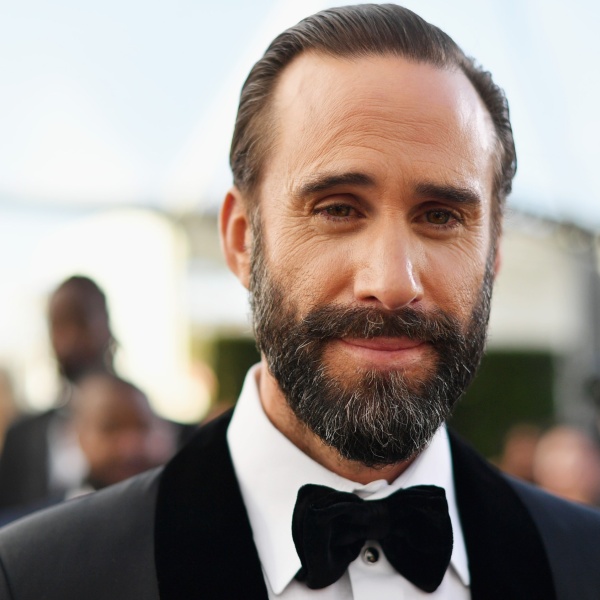Judd Nelson’s Near Involvement, Atlantic Releasing’s Silly Demands & More Learned From Film Linc Conversation With Filmmakers

It’s no secret that a majority of us probably grew up with the charming and always enjoyable collection of teen-comedies from the 1980s. Whether you were that age or just catching the reruns in the early ‘90s, there’s a lot of us who hold a special place in our hearts for the John Hughes and John Cusack worlds, with some of us even able to name lesser-known ones such as “Just One Of The Guys” and “Three O’Clock High” as part of a regular Saturday/Sunday afternoon rotation.
One of the most famous to spread the love of this genre is Kevin Smith, a filmmaker who was influenced by this batch of flicks as much as he was from filmmakers like Jim Jarmusch or Richard Linklater. This writer can’t get behind many Smith movies nowadays, but that happens — tastes change and develop, but there’s no denying that there was a point when “Mallrats” and “Clerks” VHS tapes were being worn to death in the family VCR. Still, if you can’t meet the guy cinematically, it takes a real hater to not admit that he’s an extremely gifted spoken-word storyteller, full of great enthusiasm, passion, and well-timed vulgarities.
The New Jersey native (now residing in Los Angeles) has made a good living traveling universities and other venues, also hosting his own podcast (“SModcast”) and putting out numerous DVDs of his hilarious rambling Q&As. The Film Society of Lincoln Center in NY is so impressed with his uncanny ability to talk and command attention that they invited him as part of their weekend-long ceremony, celebrating their new Film Center. Part of a new, bi-monthly program, Smith will show a movie of his choice and then discuss it with the creative team, broadcasting it through his SModcast service. For this special occasion, he chose “Valley Girl” directed by Martha Coolidge
Released in 1983 (and roughly based on Shakespeare’s “Romeo and Juliet“), “Valley Girl” follows the beautiful and pampered Julie Richman (Deborah Foreman), a high-school girl who loves nothing more than hanging out with her posse and going to the mall. But she’s had it with her current boyfriend, a preppy jock who only calls when it’s convenient for him. After a straight-forward break-up, Julie attends a party and catches eyes with punk party crasher Randy (Nicolas Cage), who persuades her to take a drive through Hollywood with him. As their relationship deepens, her friend group and ex-boyfriend give her an ultimatum — dump the weirdo or lose everything that comes with living in the rich, clean Valley lifestyle. What’s a girl to do?
Maybe best known for being Cage’s jump-off point, “Valley Girl” is a fun romp just like the rest of its ilk. After screening a fine 35mm print, Smith spoke not only with director Coolidge, but also with actress Julie Richman and cinematographer Frederick Elmes, also responsible for the very-different looks of “Eraserhead,” “Wild at Heart,” “Broken Flowers,” and a butt-load of other fantastic films. We’ve put together the ten most interesting things from their 1.5 hour chat, which included a lot of love for Cage and the nitty-gritty on production house Atlantic Releasing.
1. Harley Smith’s (Kevin’s Daughter) First Experience In This World Was Nicolas Cage’s Chest Hair Pyramid
“When we went to deliver our daughter, it was a scheduled delivery and my wife asked me to bring some movies,” Smith recalled. “She said, ‘You pick, you know me best.’ I picked ‘Valley Girl’ and ‘Batman The Animated Series.’ So when she was going into labor she screamed put something in, and I put in ‘Batman’ and she said, ‘You fucking idiot!’ and I was like ‘I got ‘Valley Girl.,’ and she said, ‘That’s better, put that in!’ So they gave her the epidermal and we got to watch it while we waited for our kid to come… so it was an epochal film for me, if you will.”
2. Production Budget Was Abnormally Low
One would expect a movie like “Valley Girl,” a teen-comedy very simple in terms of casting and locations, to be a relatively cheap production. The exact number, however, is much smaller than anyone would assume for a flick like this (especially knowing that both “The Breakfast Club” and “Porky’s” were made around the same time and cost $4 million). “Our budget was $350,000 and at the last minute they took $25,000 of that away,” the director explained to the audience and a very flabbergasted Smith. “An enormous number of people were not paid at all,” she admitted. “The entire art department – wardrobe, sets, decorations etc. – their entire budget was 3,000, and the studio didn’t even think they needed it at all.” Coolidge also revealed that Atlantic paid her a not-so-generous sum of $5,000 for her time. After she had delivered a much better flick than the studio expected, they began a bidding war, coating “Valley Girl” in a fib — that it did, in fact, cost $4 million to make. “They told them it cost $4 million to make. Paramount was the highest bidder, but ultimately Atlantic figured they’d make more money doing it themselves,” she said.
3. Judd Nelson Could’ve Been Punk Randy
The team saw loads of people for the romantic lead, including many people that were part of the upcoming “brat pack.” Coolidge was unimpressed with their pretty boy looks, but did mention that she was close to nabbing a pre-“Breakfast Club” Judd Nelson. “I almost cast Judd Nelson, and he was tied up… which was probably lucky for me. Not that that was a bad choice, by any means.” She then found her Randy in Cage, but we think Judd Hirsch should have at least gotten a ring. Just the polite thing to do.
4. Nic Cage Was Last To Be Cast
Speaking of that particular casting, despite the unwavering enthusiasm for Cage and his performance, he was actually the last one brought on board. “I was sick and tired of seeing these pretty boys, so I walked over to the reject pile, picked up a picture of Nicolas Cage and said ‘Bring me people who look like this!’” Securing him wasn’t as easy, though, as he had commitment on a little film called “Rumble Fish.” “Our paths never crossed at American Zoetrope and this was the first time he was using the name Cage. I asked him to do it and he said he was in a Francis Ford Coppola picture and couldn’t. I put my arm around him and said I’d make him a star, and that Francis was like family to me…” There was a brief pause for laughter before she recounted calling the production manager and searching the cast for a “Nicolas Cage” – but there was only a “Nicolas,” and he was listed under “Coppola.” “That’s actually one of Nic’s favorite stories…” she concluded.
5. Actual Requirement For Coolidge: A Minimum Of Four Boob Shots
So you’re finally set to make a film after years of effort. What do you do when the fine print requires a strict number of bare breasts? Just go with it. “The studio fought writers Wayne Crawford and Andrew Lane against my involvement for two weeks, they were like, ‘We don’t want her, she’s an artist,’ ” Coolidge said. “The writers so desperate not to direct that they gave me half their salary… so we sat down with them and discussed, and Atlantic said, ‘You’re going to have to give us four scenes with breasts in the movie. Does that bother you?’ and I was like ‘Uh… no, not if I can make it.. real… I don’t have a problem with it.’ ” Quite bizarre, with Smith adding, “And you stuck to that stipulation to a T. One of them is only four frames… but those four frames count a lot to a 13 year old boy at home.” Touché.
6. Unsurprisingly, Cage Created All Of His Character’s Quirks
From randomly blowing a tinker-toy whistle to the very memorable break-up line “Well fuck you, for sure, like totally!”, Cage didn’t just come into this behavior as he got older — he was always inventing off-the-cuff abnormalities, giving a special kind of humor to all of the projects he’s been a part of. However, knowing his most recent work, it’s not shocking to discover that all of the weirder things he did in “Valley Girl” were of his own invention. “His chef’s hat, 3D glasses, those are all just things he came up with. He was a very method guy. He lived in his car, you had to call him by his character’s name on the set…” Coolidge trailed off, remembering the difficulty of getting in touch with him, “but it was fun, because as a director I could just pick from all this great stuff that he did.” Foreman also had nothing but nice things to say about the “Face/Off” actor’s performance and presence, adding a very charming and personal memory. “He wrote me a poem, it’s in my scrapbook… it’s called ‘American Dream Girl’. It was really sweet.” Nicolas Cage = bad lieutenant, decent bard.
7. Punk Band X Were Originally Going To Be Featured
As Randy takes Julie through a tour of the Hollywood punk scene, we’re treated to the best kind of seedy-bar and a performance by the Plimsouls. Not a bad band by any means, but the originally slotted act would’ve likely made a larger impact. “The original plan was to have X. But then they kind of freaked, and said they didn’t want to alienate their ‘valley fans’ so they passed,” Coolidge said. Oh what could’ve been.
8. Two Fraternities Nearly Killed Each Other On Set As Extras. Also Atlantic Wasn’t Keen On Having One Of The Main Characters Black
“I wanted one of the four girls to be black, but the studio refused… so the next largest part of a valley girl I cast it black,” Coolidge said. “What they said infuriated me. In our research, we would see valley girl contests and we would see black girls and say ‘Hi, I’m a valley girl, and I’m totally tubular, etc. etc.’ and I thought it was such a phenomenon… and that it should be in the movie. But I had to do the best with our circumstances.”
Meanwhile, ‘80s teen-flicks closing with a prom sequence of any sort isn’t terribly exceptional (though it does get us every time), but the story behind “Valley Girl”‘s is particularly amusing. Because they had to fill an entire gym with high-school looking people, the crew recruited a number of college students. However, most of them turned out to be part of rival fraternities, ready to rumble at the drop of a hat. “We had to keep two warring fraternities apart so we could shoot the scene without them killing each other, or tearing apart the tuxedos…” cited Frederick Elmes, the cinematographer. His wife, production manager/assistant director Nancy Israel also chimed in from the audience with a humorous detail. “All I remember is them driving a truck onto the gym.” That must’ve been one brutal battle.




